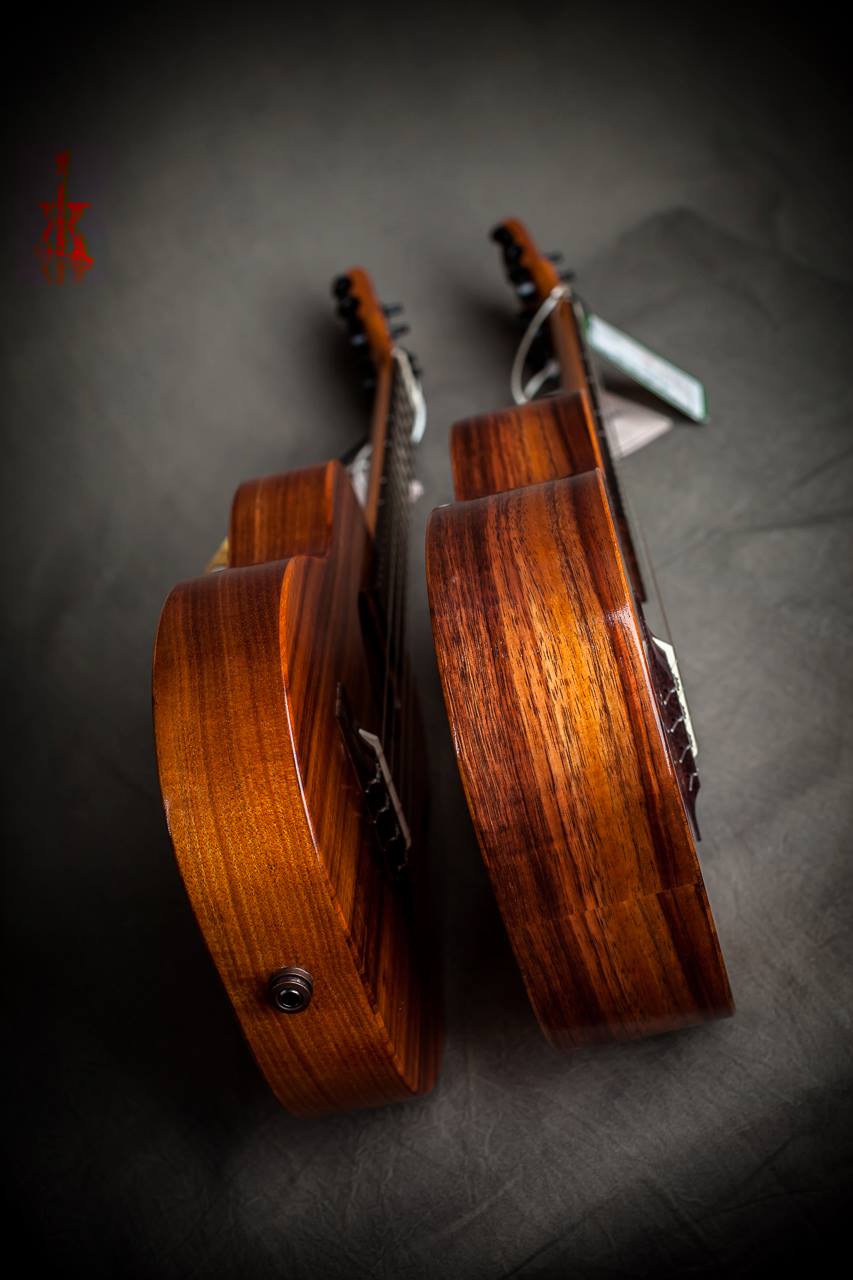The “unibrace” or one brace body defines the KoAloha sound and would have never existed had it not been for Mr. Okami. It’s different enough to say that confidently. It’s an amazing idea and it works!
Alvin and his wife Pat, along with their sons Allen and Paul, are some of me and my wife’s favorite people.
The KTM-00 is a classic Hawaiian Koa Tenor Ukulele. Just over a grand with sounds like no other. But last year they introduced a new variation, a thin body brother! Slim sister?
The KTMS-00 has a 2″ body depth versus the regular 2 3/4″ of the KTM-00. So it’s not a drastic change, but how does it affect the sound? Come into our listening booth while the young and amazing Corey Fujimoto demonstrates these two Koa tenor ukes.
So what’s really going on here? What are the physics of body depth in an ukulele? Most of what we call tone comes straight from the top or soundboard resonance, but a large part is still determined inside the body, especially the bass frequencies and harmonic character. Cover your sound hole and you will hear this loss. Another interesting thing to try is humming inside the soundhole. Raise and lower your pitch and notice that some frequencies will be amplified more than others. The resonant frequencies of the panels, the opening or soundhole, along with the volume of air enclosed by the body, forms a low frequency resonator. This is known as Helmholtz resonance. Science lovers can follow that link into the vortex of Wikepedia. It’s interesting, if you’re interested.
Of course, many factors are involved here as they relate to body depth and it’s effect on volume and harmonic color. Examining anything closely enough can be fascinating, but for our purposes let’s make it simple. We have two KoAloha tenors with the same exact specs, except the KTMS-00 is 3/4″ slimmer than the KTM-00. In this recording and setting, how do you think it affected the tone?

Please share your thoughts, opinions, or experience in the comments below.
Aloha friends, a hui ho!
